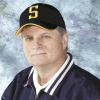When I was in college, I hated multiple choice questions, especially those with numerous answer bubbles to fill in with a No. 2 pencil. I will give you a simplistic example of the type of question that would drive me crazy: An apple is A. red; B. green; C. reddish-yellow; D. all of the above; E. none of the above.
Funny thing, I always hated essay questions, too. I always thought the professor got a kickback at the bookstore when he required his students to buy a “blue book” and bring it to his midterm and final exams.
If I had to pick the lesser of three evils, I guess I’d have to say a true/false test was preferred as at least you had a 50% chance of guessing the right answer, or so it seemed. Sometimes there was a one-word change making a seemingly true question false or vice versa. Confused? An example from my vertebrate physiology final in 1969 – True or false: A rib fracture may cut, tear or perforate the tissue of the esophagus, causing hemothorax or may collapse a lung, pneumothorax. (The answer is in my trivia section.)
Now back to golf. I will give you 10 short statements, nine of which are true. All you have to do is pick the sentence that is false. To ease your pain, the entire statement is true or false; there are no single words changed to confuse you.
1. In 1952, two women golfers were killed by the U.S. Navy when the women were playing on a course near Jacksonville, Florida.
2. Prior to 1870, players would tee up their shots to the next hole while still standing on the green.
3. In 1957, a golf match was conducted over the telephone.
4. In the history of the U.S. Open, only one winner, Fred Herd (1898), was required to pay a deposit on the trophy before accepting it.
5. In 1949, the British Open was decided by broken glass.
6. Jack Nicklaus’ picture was printed on a legal-tender Scottish banknote.
7. The first non-American to win the Masters was Jose Imanez (Spain) in 1961. He never won another major during his career.
8. Aerial golf was first played in 1928 by dropping golf balls from low-flying planes.
9. Great Britain has a golf hole named after the last witch to be burned at the stake in 1727.
10. The first televised golf tournament was in 1938 in Great Britain.
Well, how did you do? If you stop and think about my 10 statements, they all seem false except for one. Here are the answers:
1. True. A crippled Navy plane crashed on the golf course, killing both golfers.
2. True. The Scots believed in “tee it high and let it fly” from the green. After 1870, they came to their senses and used a tee box.
3. True. In 1957, members of a British golf club teed off in a tournament against members of an Australian golf club. Highlights and scores were transmitted by phone. The Brits beat the Aussies 564-570. Who knew?
4. True. A golfer with a history of loving the 19th hole celebration was required to put down a large deposit to protect the trophy from being pawned to raise cash for more drinks at the bar.
5. True. At the 1949 British Open, Harry Bradshaw elected to play his ball in the second round from where it lay – inside a broken beer bottle. The impact showered him with glass, and with facial injuries and glass in his eye, he finished the tournament in a tie but lost in a playoff.
6. True. Scotland, the home of golf, honored Nicklaus in 1995 with his picture on a five-pound note.
7. False. Gary Player was the first non-American to win the Masters in 1961.
8. True. Not sure why, but true.
9. True. The 17th hole at Royal Dornoch Golf Course is named The Witch, in memory of Janet Horne.
10. True. The BBC beat us to the punch; however, we do have the Golf Channel and they do not.
19th Hole Trivia:
The answer to the rib fracture true/false question is false. The word pleurae was changed to esophagus to make it untrue. I know what you are thinking. I thought the same thing.
The aerial golf thing bugged me so after extensive research, I found out a golfer named Willie Hammond and his wealthy friends actually dropped golf balls - wrapped in multicolored cloth - on each green to determine the winner of each hole on a regulation course.



















































